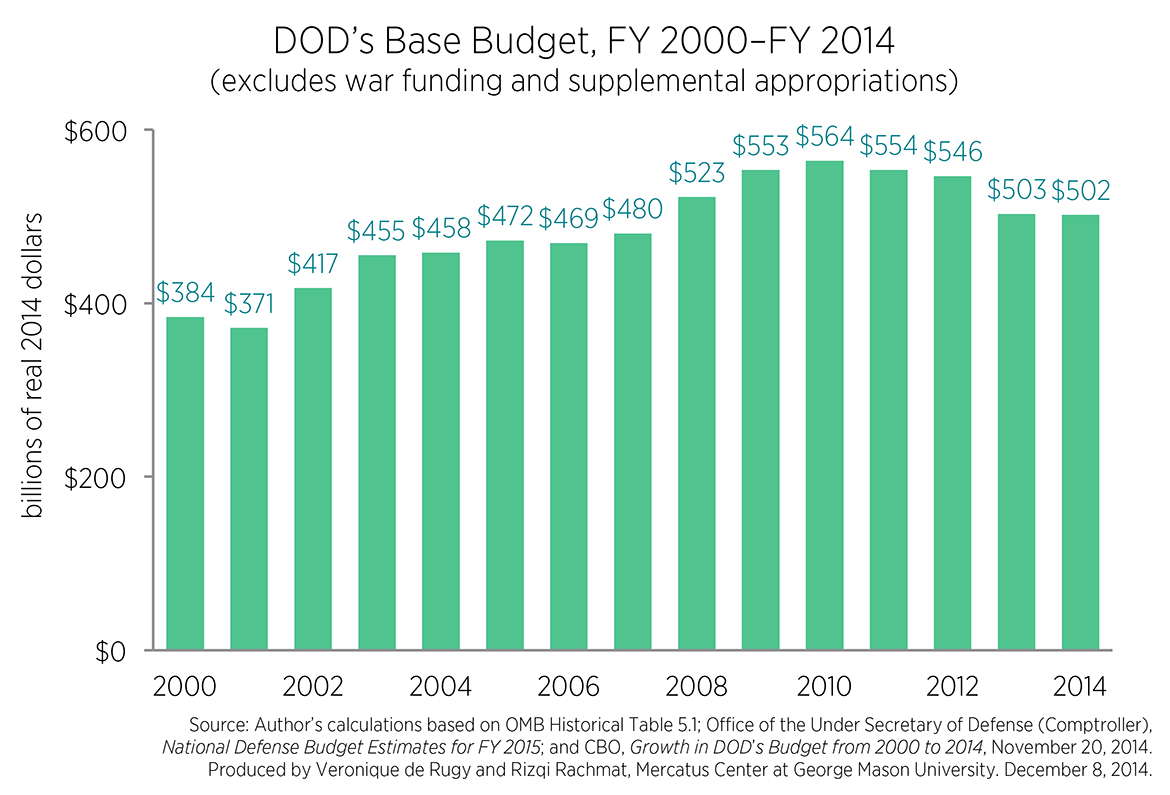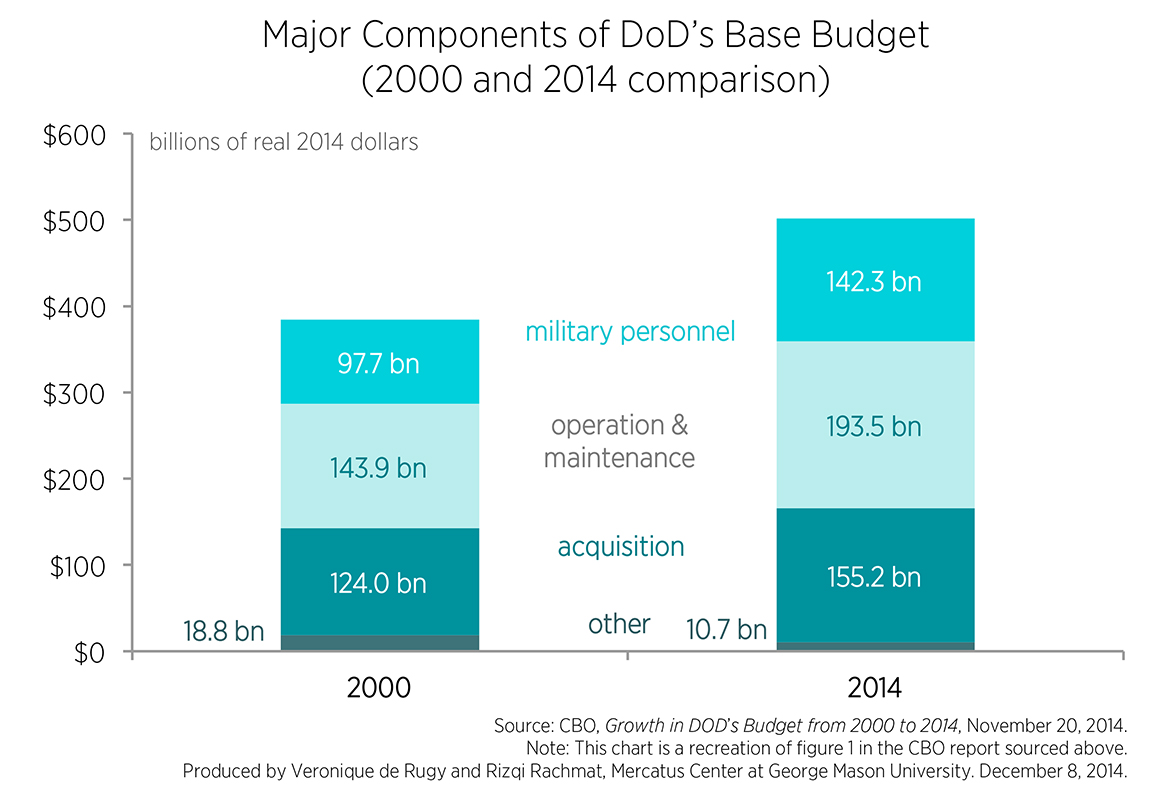- | Government Spending Government Spending
- | Data Visualizations Data Visualizations
- |
Growth in Pentagon’s Budget Goes beyond War Costs
Policymakers need to reconsider whether the nation’s best interests are served by the current expansive global military presence. Limiting American military presence overseas would not only benefit the nation, it would also help control runaway DoD personnel costs.
A recent report from the Congressional Budget Office, which examines the growth in “base” Department of Defense (DoD) funding from fiscal years 2000 to 2014, finds that inflation-adjusted (real 2014$) base Pentagon funding jumped from $384 billion in fiscal year 2000 to $502 billion in fiscal year 2014—an increase of 31 percent.
Base DoD funding excludes supplemental and emergency money for the wars in Afghanistan, Iraq, and ongoing “overseas contingency operations.” It also excludes funding for defense-related activities that are funded in other parts of the budget (e.g., nuclear weapons programs at the Department of Energy). In other words, the substantial amount of money—approximately $1.7 trillion since fiscal year 2001—that the DoD received for the wars in the Middle East and other emergencies is excluded from the data presented in the green bars in the first chart. Although base funding peaked in fiscal year 2010 due to spending caps instituted under the Budget Control Act of 2011, the respite is likely to be temporary.
The CBO report was released during negotiations between the House and Senate armed services committees on the fiscal year 2015 National Defense Authorization Act (NDAA). The NDAA guides defense policy and authorizes the annual appropriation of funds to the Pentagon. A key issue of contention that the CBO report addressed is the rise in pay and benefits for military and civilian DoD employees. As the bright blue bars in the following charts show, funding for the military personnel component of the DoD’s base budget increased 46 percent in real 2014 dollars.
There are also substantial personnel costs contained within the operations and maintenance component (O&M, in the light blue bars above), which jumped 34 percent in real 2014 dollars between 2000 and 2014. About one-third of this increase was driven by increases in federal civilian employee pay and benefits, excluding health insurance. The cost of the Defense Health Benefits program doubled, which accounted for another third of the increase in O&M. As the CBO notes, “primary reasons for that growth are the new and expanded TRICARE benefits that lawmakers authorized, including expanded benefits for reservists and their families, and the very low out-of-pocket costs of TRICARE relative to other health care plans.” The rest of the increase in the O&M component can be attributed to rising fuel costs, operations support, and “other.”
Unfortunately, the compromise reached between the House and Senate armed services committees does little to address mounting DoD personnel costs. Even though Pentagon officials requested that lawmakers include changes that would slow the rate of growth in personnel benefits, the final version of the NDAA contains minimal adjustments. Indeed, Congress has consistently rebuffed efforts to corral in the unsustainable growth in personnel costs. Given that the funds available to support the Pentagon are not unlimited, policymakers are facing a situation where the dramatic increase in personnel costs means less money for other priorities. It’s also unfair to taxpayers who have been compelled to pay for a global US military presence that one could argue is excessive and contrary to limited government principles. Policymakers need to reconsider whether the nation’s best interests are served by the current expansive global military presence. Limiting American military presence overseas would not only benefit the nation, it would also help control runaway DoD personnel costs.





